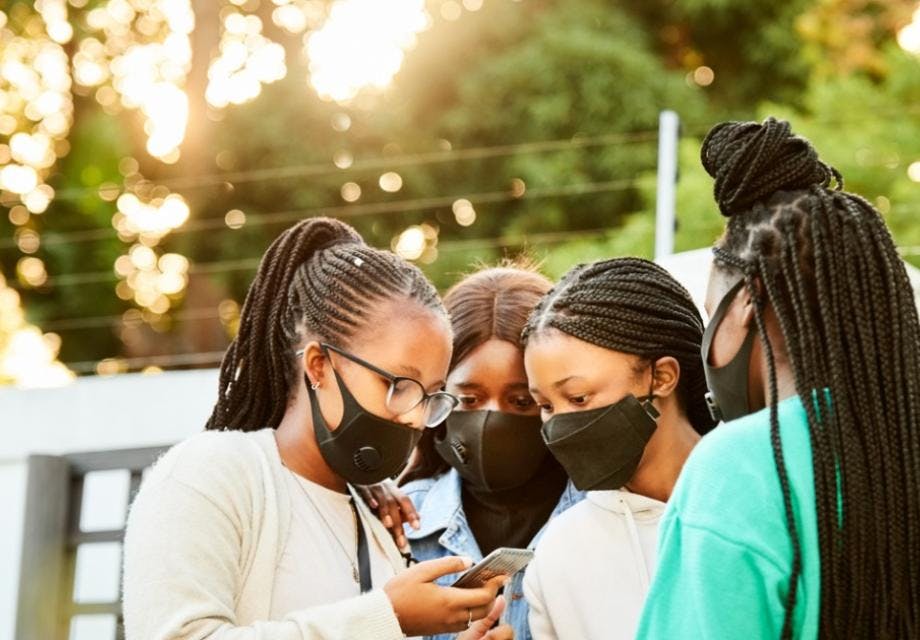Concerning evidence on the impact of COVID-19 on adolescents released by PEPFAR
Hester Phillips
22 August 2023
HIV testing, diagnosis and treatment among adolescents fell sharply in 2020, analysis from 15 African countries plus Haiti shows
The US President’s Emergency Plan for AIDS Relief (PEPFAR) has released data about the impact of the COVID-19 pandemic on HIV testing and treatment for adolescents.
What is the research about?
How the COVID-19 pandemic affected adolescents (ages 10-19) in parts of Africa and Haiti.
The study relates to adolescents reached by PEPFAR programmes between October 2019 and September 2020. The 16 countries are Burundi, Dominican Republic (DR), Democratic Republic of the Congo (DRC), Eswatini, Haiti, Kenya, Lesotho, Malawi, Mozambique, Nigeria, South Africa, South Sudan, Tanzania, Uganda, Zambia and Zimbabwe.
Why is this research important?
Across the world, the COVID-19 pandemic and measures to control it disrupted HIV services and increased HIV risks. PEPFAR’s data provides important insight on what this means for adolescents.
What did they find out?
The number of adolescents testing for HIV, being diagnosed and starting treatment fell between October 2019 and September 2020. Declines were worst between January and June 2020, during the first wave of COVID.
In 2020, the number of HIV tests being taken by adolescents fell by a fifth (21%) compared with pre-COVID levels. The biggest declines happened in Haiti (-71%), Zimbabwe (-59%) and DRC (-45%).
Between October and December 2020, HIV testing began to rise. This is probably due to the easing of some COVID restrictions. But testing rates were still below pre-COVID levels.
Linked to the fall in HIV testing, HIV diagnoses also fell among adolescents by just under a third (28%). The largest decreases in diagnoses happened in Haiti (-53%), Zimbabwe (-44%) and South Sudan (-43%). When HIV testing increased at the end of 2020 diagnoses also increased, but not to pre-COVID levels.
There was a 26% decrease in adolescents beginning antiretroviral treatment (ART) during 2020. Haiti and Zimbabwe had the largest falls in ART initiations (-50% and -38%).
The proportion of adolescents with HIV who had viral load tests in 2020 dropped by 5%. This may be due to supply chain disruptions and countries using HIV monitoring services for COVID-19 testing.
Bucking the trend, viral load suppression rates among adolescents increased by 4% (from 76% to 80%).
What does this mean for HIV services?
Fewer adolescents testing for HIV means fewer adolescents with HIV will have been diagnosed. This is likely to lead to worse health outcomes for those teenagers and more HIV infections. This will put HIV services under more pressure.
Providing adolescents with self-testing kits and access to community-based, peer-supported testing could help increase diagnoses among adolescents. Advocating to lower the age of consent for HIV testing could help to identify younger adolescents with HIV.
During COVID-19, many programmes began offering multi-month prescriptions or made ART refills available in convenient locations. This might have contributed to the increase in viral suppression. Finding out if adolescents with HIV find these things helpful, and providing them if so, could help more adolescents stay on HIV treatment.
There is also a need to advocate for HIV services to be protected in future pandemics so that adolescents with HIV, or at increased risk of it, can protect their health.
Get our news and blogs by email
Keep up-to-date with all our latest news stories and blogs by signing up to the Be in the KNOW news digest.
